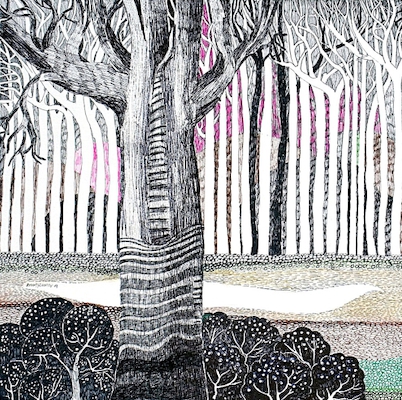The allure of monochrome art lies in its inherent simplicity and the depth of interpretation it allows. By focusing on a single hue, artists encourage viewers to engage with the emotional and psychological aspects of color. Monochrome paintings possess a timeless quality, making them versatile pieces that can complement various styles of decor, from contemporary to classic.
Historically, monochrome art has roots in various movements, from the 19th-century Impressionists to the 20th-century Minimalists. This evolution showcases how artists across the globe have embraced the monochrome palette to express complex themes while maintaining a sense of unity and clarity. Picasso’s iconic Guernica, some of Jackson Pollock’s action paintings and certain iconic works of Mark Rothko are monochrome paintings. In India, artists such as Nasreen Mohamedi, Ram Kumar and V.S Gaitonde have utilized monochrome techniques to explore themes of spirituality and introspection, blending traditional elements with modern aesthetics.
In conclusion, investing in monochrome art is an opportunity to own pieces that not only enhance the beauty of a space but also invite contemplation and introspection. The historical significance, contemporary relevance, and emotional depth of monochrome paintings make them a compelling choice for collectors. Explore our collection of monochrome art and paintings at Artflute.com to discover works that resonate with your artistic sensibilities and elevate your living spaces. You may also like to explore our other collections: Pen and ink Drawings, Black and white abstract art, Dry pastel paintings, Mixed Media Art, Charcoal Paintings, Minimalist Paintings, Small Paintings, large Paintings









